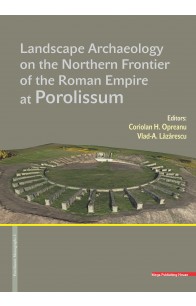Rezultate căutare pentru 'Ioan Oprea'
Preț Normal: 150,00 LEI
Special Price 130,00 LEI
„The frontiers of the Roman Empire, over 5000 km long, stretch from the Atlantic coast of Scotland, along the Rhine and the Danube, also enclose the Banat region and Transylvania, then going down along the Oriental Carpathians to the Black Sea; from the southern coast of the Black Sea they continue towards the Near East until the Red Sea; then, in North Africa, they line the edge of the Sahara desert until the Atlantic coast of Morocco. Over this entire area, visible traces of fortifications, roads and settlements are still preserved, but numerous monuments still lay hidden underneath the earth. Despite the fact that the Roman frontiers crossed regions with different relief and climate, they constitute a whole in that they were designed to protect Roman territories. The research of these monuments and the preservation policy regarding them was and is unequal in the various presentday states on whose territory traces of the Roman frontier are to be found. Consequently, in the ‘80s of the 20th century, the idea of globally protecting the Roman frontiers, viewed as a unitary monument, was met. In 1987, Hadrian’s Wall in United Kingdom was declared a UNESCO monument. It was followed in 2005 by the German-Raetian sector, on which occasion the UNESCO committee decided to set up the ‘Frontiers of the Roman Empire’ site. (...)
This project through its complexity generated an interdisciplinary approach of the proposed subject stimulating such future attempts in the archaeological research field. By using the latest technical methods of non-destructive investigation the project did not damage the stratigraphy of the archaeological site obtaining instead a high amount of data otherwise time consuming judging from the archaeological excavations perspective contributing also to the preservation of the cultural heritage.” - Introduction
„Ediţia în limba română a acestui volum apare la mai mult de trei ani după publicarea variantei originale. Sunt mulţumit, pe de o parte, că evoluţiile din 2017 şi până acum nu m‑au obligat să aduc modificări serioase cadrului conceptual al cărţii. În lumina celor mai recente evenimente, cred în continuare că Europa Centrală şi de Est rămâne o semi‑periferie nefericită şi doar aparent aşezată, suspendată între visul niciodată atins al integrării în Occident şi reculul democraţiei cauzat de o combinaţie de resentimente, subdezvoltare şi lipsă reciprocă de înţelegere cu nucleul continentului european. Pe de altă parte, am profitat de ediţia românească pentru a aduce la zi o serie de date economice şi demografice, pentru a corecta câteva erori factuale şi de tipar, dar şi pentru a adăuga unele evenimente şi citate noi. Trebuie să fac o precizare importantă: cartea nu analizează impactul pandemiei de coronavirus asupra Europei de Est. Deşi este clar că pandemia va avea un impact profund şi de durată asupra vieţii noastre cotidiene – şi în final asupra guvernării democratice şi bunăstării sociale a milioane de cetăţeni din întreaga regiune – este prea devreme pentru a evalua din punct de vedere istoric un eveniment în curs de desfăşurare.” (din „Prefaţă”)






